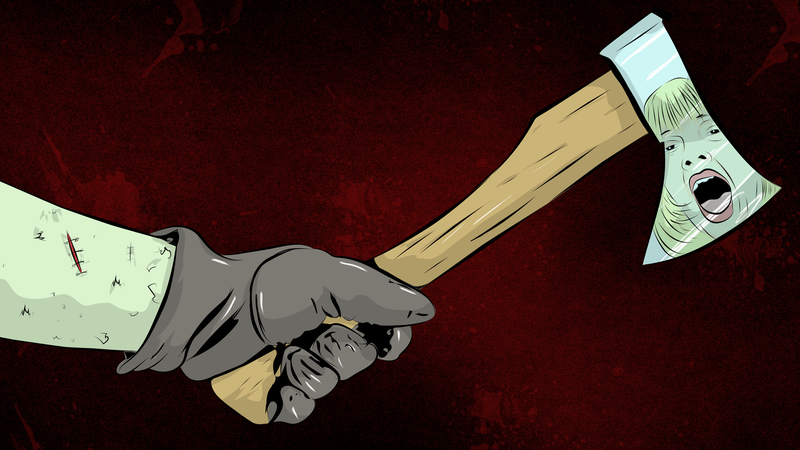
Musing about tabletop gaming. In particular, about tabletop RPGs--the various editions [and clones] of "the world's most popular, fantasy role-playing game;" Palladium's "Megaversal" system; Battletech & Mechwarrior; d20 Star Wars; FATE; as well as home-brew settings and game systems.
Tuesday, August 29, 2017
Archfey of Monvesia
The archfey of Monvesia have already been visited briefly in the warlock entry of Mages of Monvesia. Here I will explore each of the chief, five archfey in some detail. Though each of the archfey represent one race or another, all are unique and powerful creatures.


Friday, August 11, 2017
Classifying Monvesian Creatures
RETCON NOTE: Portions of this posts are sysematically being replaced by a series of posts under the heading of "Classifying Monvesian Creatures":
- Aberrations, Celestials, Fiends
- Anachromisms, Doubles, Thoughtforms
- Beasts & Monstrosities
- Divinities
- Elementals
- Fey [& Plants]
- Humanoids & Giants
- Undead
General information about creature classification in this setting will remain in this post.
As has been pointed out in previous posts, the nature of Monvesia is different from that other D&D worlds. To accommodate these differences, there needs to be some minor shuffling of creatures. A few new monster types have even been created. The creature types of Monvesia are listed below, showing those both new and altered.
Beasts
Many creatures normally classified as monstrocities are included among the beasts of Monvesia.
- Catoblepas [beast]
- Roc [beast]
Daemons (Multiple Types)
Daemons are a family of several monster types, each tied to one of the three-Sphere transitive planes. Five of these types already exist in the game, and three are new: Aberrations, Anachronisms, Doubles, Celestials, Fey, Fiends, Thoughforms, and Undead.Wednesday, August 9, 2017
Foolishness Check
While running a "summer slasher flick" one-off adventure for d20 Modern, I wanted to make sure that the characters still acted like the idiots we normally see in horror films--particularly since all my players were horror fans, and certainly knew better. Below is the mechanic I settled on. It added a sense of plausibility to the genre, and the players loved it.
Since the trope ultimately has its origins in gothic literature, the Foolishness Check would also be appropriate in a gothic fantasy setting/story. It may now, however, be used as frequently as in a modern horror game with victim-style characters. Since that slasher game, I have kept the mechanic in my back pocket to use whenever I feel the need.

Monday, August 7, 2017
Elementals of Monvesia
In order to accommodate a world with a paradigm that includes six elemental forces, new monsters need to be introduced in order to support them. Below are new variants on creatures fundamental to the game: elementals and genies of light and void.

Elementals
Light Elemental
A light elemental is a radiant personage hovering in midair; its exact features are hard to distinguish, but limbs and head are often discernible. Sometimes, it appears as little more than a pillar of light. As a being of pure radiance, it is the fastest of all elementals--gliding through the air or across the land with equal ease.Friday, August 4, 2017
Monvesian Culture: Rakasta Qrisjarr
Qrisjarr (KREE-sharr) are artisan blades crafted in the rakasta tradition. Each blade has an asymmetrical wave shape, and a distinctive blade-patterning common to the tjakeer steel used to make them. Each weapon is unique, built on a common pattern with several opportunities for personal choice and artistic expression. These weapons are treasures, but are more valuable than their mere monetary cost.
Qrisjarr are given as gifts by njanarr* to warriors who have proven to be brave, skilled, and who embody rakasta honor--which includes a "healthy" dose of arrogance. They are as much a symbol of status as they are combat tools. Anyone gifted qrisjarr is considered a djiqic, a rakasta knight. To wield a qrisj without having been given this honor is an insult. Any non-rakasta with one is treated with suspicion until a rakasta of standing (djiqic, elder, shaman, or njan) can confirm the bearer's status.

Qrisjarr are given as gifts by njanarr* to warriors who have proven to be brave, skilled, and who embody rakasta honor--which includes a "healthy" dose of arrogance. They are as much a symbol of status as they are combat tools. Anyone gifted qrisjarr is considered a djiqic, a rakasta knight. To wield a qrisj without having been given this honor is an insult. Any non-rakasta with one is treated with suspicion until a rakasta of standing (djiqic, elder, shaman, or njan) can confirm the bearer's status.

Monvesia Culture: Rakasta Language
In the process of drafting a post on ceremonial weapons from years-old notes, I took the time to explore the rakasta language. I pulled in two location names of supposed rakasta origin--Zyrndy and Tamyya--and incorporated them into a standardized "transliteration." From there, I was able to identify what sounds would be used in a rakasta alphabet (instead of using elfish runes as previously suggested).
Outlined below are the letters I have used to write rakasta words with [the basic sounds they represent] and (the Turkish letters they replace). While the sounds do not exactly correspond to the sounds of Turkish, these correspondences are useful when transforming a Turkish root to a rakasta word.
- Vowels: A [ah] (a); E [ay] (e); I [ee] (ı, i); O [oh] (o, ö); U [oo] (u); Y [i~u] (ü).
- Plosives: C [t~k] (k, t); D [d~g] (d, g); P [p~f] (f, p); Q [gutteral k~g] (k, g); V [b~v] (b, v); ' [glottal stop] (ğ).
- Nasals: M [m] (m); Mj [mi, my] (n/a); N [n] (n); Nj [ni, ny] (n/a). (mj and nj are unique rakasta sounds that can be used in place if Turkish y)
- Fricatives: Cj [ch] (ç); Dj [j, soft g] (c); S [s] (s); Sj [sh] (ş); X [x, ch] (h); Z [z] (z); Zj [zh] (j).
- Rhotics: R [flap or trill r] (l); Rr [gutteral r] (r).
Subscribe to:
Posts (Atom)